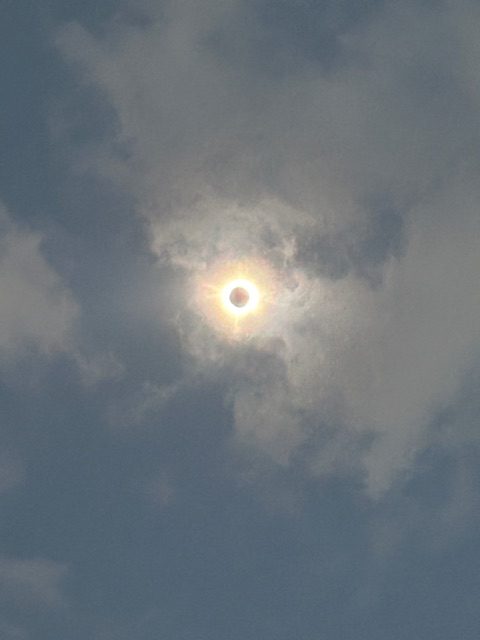Over spring break, the US experienced its first total solar eclipse since 2017. Unlike the 2017 total eclipse, this 2024 eclipse was much lengthier, spanning a much longer area across North America. According to NASA, the 2017 eclipse had a path of totality (where the Sun becomes fully blocked out) with a width of approximately 62 to 71 miles wide while the recent eclipse was around 40 miles wider with range from 108 to 122 miles wide. Because of the distance and the way the moon was oriented relative to the Earth and Sun last week, the path of totality also had a much different trajectory compared to the 2017 eclipse. In 2017, the eclipse started from Oregon and ended in South Carolina covering a total of 12 million people, while last week’s eclipse started from Southern Mexico and ended near Maine, fully covering a much larger total of 31 million people. The 2024 eclipse also possessed a much longer time in totality, with some areas being almost twice as long as the duration of totality in the 2017 eclipse.
Total eclipses occur when the Moon perfectly lines up with the Sun, blocking part of the Sun’s light and casting a shadow on the Earth. Because the moon fully revolves around the Earth once every month, the moon perfectly blocks the Earth and Sun approximately once every month, creating an eclipse. However, because the moon is about 400x smaller than the Sun and the Earth orbits the Sun in an ellipse (long oval shape), the moon fails to completely cover all of the Sun’s light and as a result, creates a partial eclipse, also known as an annular eclipse. Only when the distance between Earth and moon is 400x as large as the distance between the Earth and Sun will a total eclipse happen, making it a very rare occurrence.
During a total eclipse, the sky progressively gets darker until the sun reaches totality. Upon totality, the sun gets completely blocked out and the sky blackens out, and the entire horizon becomes covered in a blend of pink and orange hues, which are due to the scattering left over by the rest of the sun’s leftover rays. As NASA describes it, the . In addition, when looking towards the Sun, one can catch glimpses of its corona as well as the solar radiation that emits, which appear as thin orange strands encircling the glowing circle that has replaced the Sun.
The eclipse was estimated by NASA to have been viewed by 215 million people across North America and was considered one of the biggest natural phenomena in recent North American history. In the city of Dallas alone, close to a million tourists flocked over to view the total eclipse. “My family planned a trip for us to view the eclipse over Spring break so I couldn’t make our school’s Robotics Regionals. It’s kind of amazing that it creates a sunset on the horizon for all 260 degrees while the sun is fully blocked out,” Jonathan Jen, 11, said.













